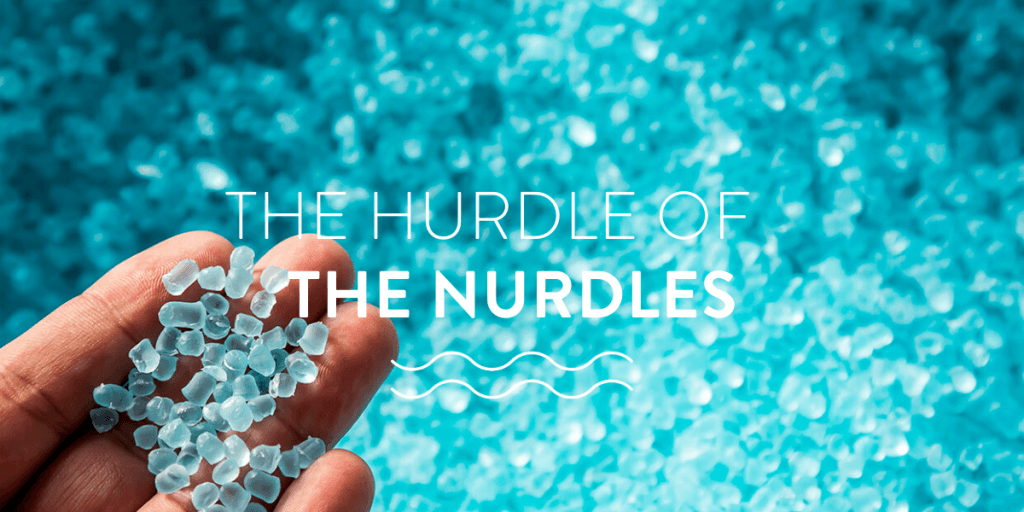If you are curious about all the ways humans impact the environment and how you can limit your personal damage, you’ll want to know about nurdles. Measuring in at less than 5mm, nurdles are the second largest source of microplastic pollution!
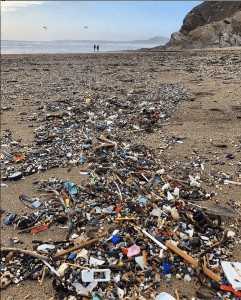
What exactly are nurdles?
Nurdles are the raw material for the majority of plastic products we use daily. Nurdles are tiny lentil- and disc-shaped plastic pellets, measuring 2-5mm in diameter and weighing a fraction of a gram. Plastic products are made by melted down nurdles. For example, bottles, garbage bins and many other household products. As you can imagine these nurdles are a vital component for many manufacturing companies with over 300 million tonnes of plastic created globally every year. Unimaginable quantities of these plastic pellets are produced and transported around the world to sustain our plastic addiction.
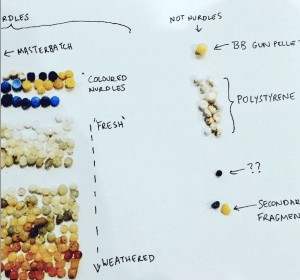
What’s the big deal?
Their tiny, almost weightless form means nurdles are easily leaked into the environment. From handling to transport, spills can occur at any stage of the nurdle lifecycle. Pellets can leak directly into the ocean and are frequently lost on land without proper cleanup measures. Land sourced pellets contribute massively to plastic pollution given the scale of nurdle production and the nature of plastic persistence in the environment.
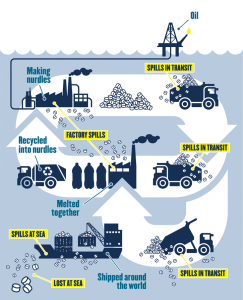
Nurdles are flooding into the marine environment. Through keen observation and dedicated volunteers, these tiny nurdles have been discovered in huge quantities all over the world.
Size matters!
Through the battering of waves and degradation by the sun’s UV rays plastics become even tinier. Worryingly, the smaller the piece of plastic the more harmful! Nurdles and other microplastics absorb pollutants. They can do nasty things when they ‘bioaccumulate’ or ‘biomagnify’ up the food web. This means when a consumer eats prey that has ingested plastic the plastic toxins are carried with it up to the next trophic level. Now the predator of said consumer unknowingly has a dinner with two helpings of plastic. This continues to multiply as we move up the food web, with the toxic particulates accumulating in marine animals as they embed within their digestive tract and leach into tissues. Naturally, this also causes a concern for human consumption.
Microplastics are consumed by phytoplankton, which form the base of many food webs. Even corals have been recorded preferentially snacking on harmful microplastics!
Bacterial hosts
A pretty gross reality of these ubiquitous nurdles are their bacterial hosting capabilities. The hard surface of waterborne plastic provides an ideal environment by microbial colonisers. The biofilms which set up camp on the so called ‘plastisphere’ can also act as a reservoir for faecal and pathogenic bacteria. A study published in the Marine Pollution Bulletin in 2019 investigated nurdles at five public bathing beaches. Every beach tested had nurdles that were colonised with both E. coli and Virbrio spp (nasty bacteria). These tiny plastic pellets pose an additional health risk to every beachgoer!
Is there a solution to the big nurdle problem?
Guidelines
Now, companies handling pellets are not villains who want to deliberately spill and waste their raw material. Inside of facilities basic housekeeping ensures most nurdles are cleaned up. However, these same measures do not translate to outside of the facility and consequently more nurdles slip under the radar.
Thoughtfully, the Operation Clean Sweep (OCS) has been set up to create a best practice scheme within the plastic industry. The OCS provides companies with a comprehensive set of guidelines to follow which ensure not a single nurdle is lost. When companies sign up to the scheme they are committing to zero pellet loss. However, still more needs to be done. At present the OCS is a voluntary scheme and there is no enforcement or monitoring of the promised revised practices. Unfortunately after 30 years of the OCS, nurdles continue to be lost in their billions.
Controlling the supply chain of nurdles
Fidra are a charity working with the public, industry and governments to develop evidence-based solutions for a sustainable future. They are calling for a Supply Chain Approach to address the nurdle pollution problem, from producer to manufacturer and every stage between. With companies abiding by best practices as a standard and regular mandatory progress reports, Fidra believe the plastic industry will become more transparent and accountable.
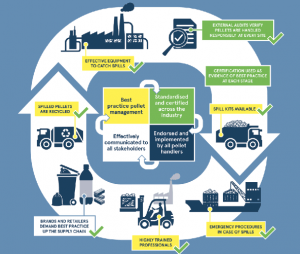
Find out more here
Cleanups
The Great Nurdle Hunt is Fidra’s flagship project working towards the elimination of nurdle pollution. In March they hosted their Great Global Hunt. By providing all the tools and information online, including a data recorder, they have made it super easy for individuals to help build vital evidence needed to push for stricter regulations. It’s also a great way to show that people around the world care about this issue!
Our amazing Ocean Mimic ambassador Emily Jupp hosted a cleanup on 15th March and had this to say:
‘I was thrilled by the reception of my lovely family. Although we were unsuccessful in hunting a single nurdle, the activity was a wonderful way to spread awareness. On the day, I bumped into a group of charming Jurassic Coast locals, who informed me of nurdle hotspots they had discovered on past cleanups.
I am determined to help tackle the persistent pre-production pellet problem and remove these nasty nurdles from the environment. The data from cleanups is so important to help push for stricter handling policies. What’s more, trash can be made into treasure! A fabulous lady named Justine created the eco-friendly jewellery range Sea of Rivers. The range includes beautiful silver rings made from upcycled nurdles. With the pellets that are an unsuitable shape and size for rings, Justine builds music shakers. Music to my ears!’
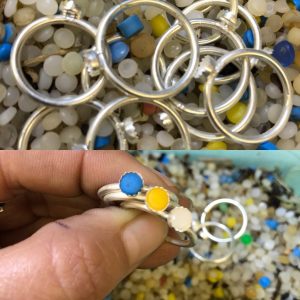
Where are you most likely to find nurdles?
Litter will accumulate in the tide line at the beach when the tide ebbs seawards. Nurdles are often found amongst the seaweed and driftwood that is always left behind. Be sure to look at the base of seawalls, as they can accumulate here too. Planning your hunt on a sandy beach will make it easier to spot nurdles because nurdles remain on top of the smaller sand particles when water filters through. Remember that most pollution is sourced from land. Nurdles embark on a journey from plastic manufacturing facilities to the ocean, passing through rivers and other waterbodies. Therefore, riverbanks, lakes and even reservoirs can also contain nurdles. Be sure to keep an eye on our Ocean Mimic blog for some general cleanup tips to help with your nurdle hunt too!
Get hunting and be sure to record any data on the Great Nurdle Hunt site


